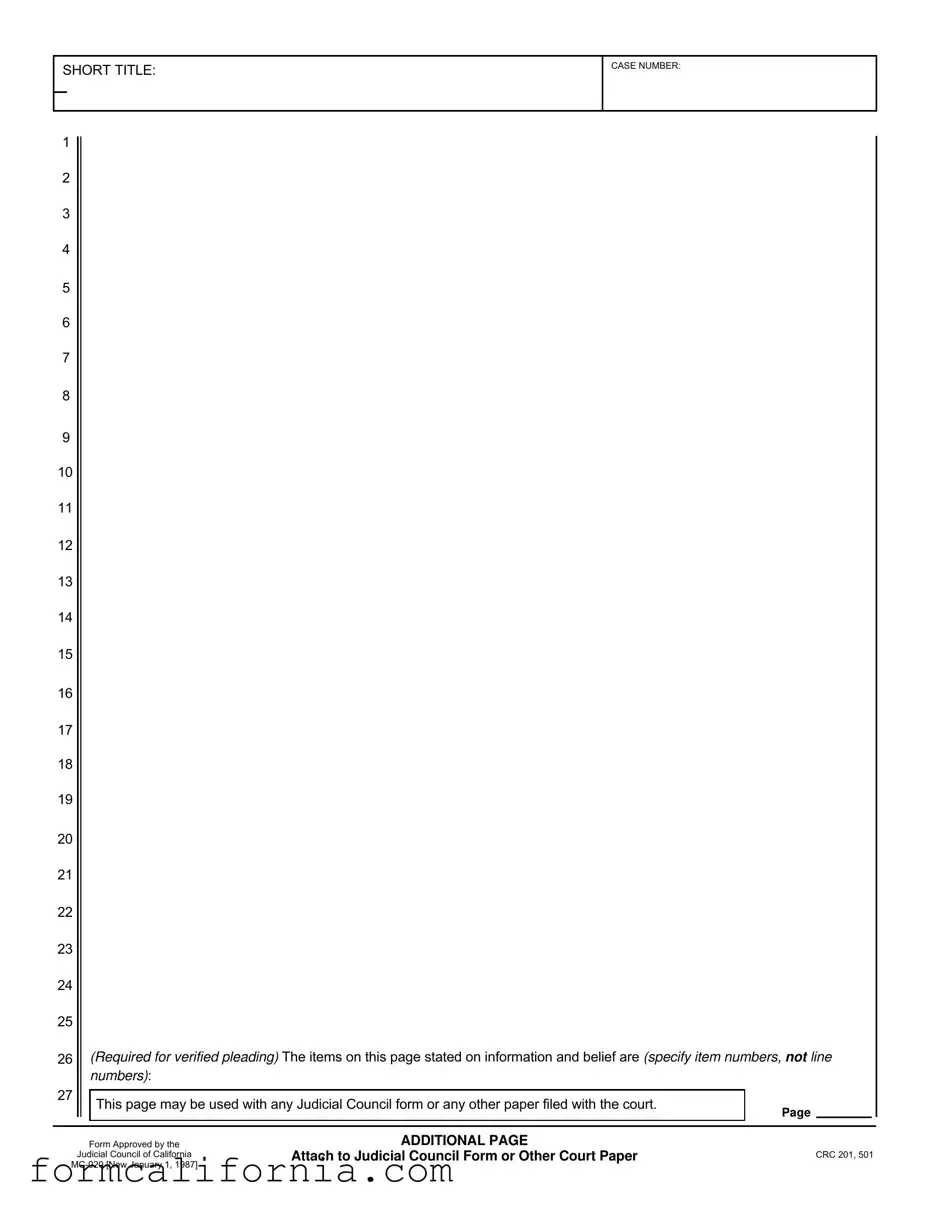The Uniform Commercial Code (UCC) Financial Statement form shares similarities with the California Judicial Council form, as both are standardized documents widely used within legal and financial systems respectively. Both forms require detailed and specific information to be filled out accurately to ensure adherence to regulations and to facilitate the processing of the document within their respective systems. They both have approved formats developed by overseeing bodies to standardize documentation across various jurisdictions.
The IRS Form 1040, used for individual income tax returns, is similar to the California Judicial Council form in that it is a standardized document prescribed by an authoritative entity, designed to compile necessary information. Both forms are essential for their respective purposes, requiring individuals to fill out information accurately to comply with legal and financial obligations. Each has clearly defined sections for detailed information, making the processing and reviewing aspects coherent and efficient.
A Deed of Trust is another document with resemblances to the California Judicial Council form. Both serve crucial roles in legal proceedings, where a Deed of Trust involves parties in a property transaction and outlines the agreement's specifics similarly, the Judicial Council form captures specific, case-related information in legal matters. Both documents are standardized to some extent within their fields and are vital for the documentation and validation of the transactions or legal actions being undertaken.
The Health Insurance Portability and Accountability Act (HIPAA) Authorization Form, although primarily related to healthcare, shares similarities with the California Judicial Council form by requiring detailed personal information to ensure compliance with specific regulations. Both forms are designed to protect the interests and rights of the involved parties, with specific items needing to be filled out to ensure the process's integrity and legality.
Bankruptcy forms, used in federal bankruptcy courts, are quite similar to the California Judicial Council form because they are standardized documents essential for the proceedings in their respective areas. Both types of forms collect in-depth information vital for the legal process they are part of, structured to facilitate clear communication between all parties involved and the court system.
Employment application forms share a common structure with the California Judicial Council form, focusing on collecting specific information necessary for the situation at hand. While employment forms gather data on a candidate's qualifications and background for job suitability, the Judicial Council form collects legal information for case proceedings, both serving as essential tools in decision-making processes within their domains.
The Lease Agreement, commonly used in property rentals, although not a legal form from the judiciary, shares the characteristic of being a structured document that captures comprehensive details about the agreement between parties, similar to the California Judicial Council form's purpose in capturing details pertinent to a legal case. Both documents are crucial for providing a clear understanding of the terms and commitments agreed upon.
Medical consent forms, required for various procedures and treatments, resemble the California Judicial Council form in their need for clear, concise information about the individual and the specific conditions or treatments being consented to. Both forms are designed to be legally binding, capturing necessary details that protect all parties involved by ensuring informed consent or detailed legal information.
Non-disclosure agreements (NDAs) are designed to protect sensitive information between parties and require detailed information regarding the agreement scope, similar to the structured and detailed nature of the California Judicial Council form. Both documents are legal tools used to outline specific terms and conditions aiming to protect the involved parties' rights and responsibilities.
The Power of Attorney (POA) document authorizes another to act on one's behalf in various matters, similar to the California Judicial Council form, which often necessitates precise information for legal processes. Both forms are integral in delegating authority, whether for personal matters through a POA or within the scope of legal proceedings, capturing detailed information to ensure clarity and enforceability.

